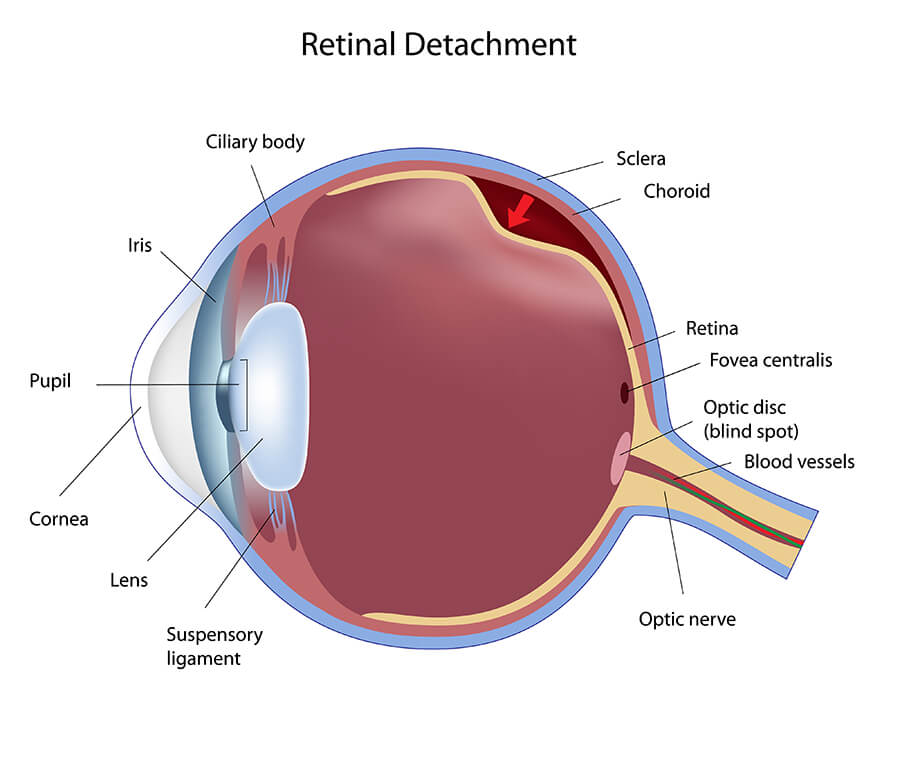Retinal Tears / Detachment
The inner eye is filled with clear jelly called vitreous. With age, the vitreous jelly undergoes the natural aging process and it deteriorates and becomes a liquid. When the eyeball moves, the small pockets of liquid move around inside the vitreous cavity. This movement causes the vitreous to pull on the retina, causing flashing. Usually the jelly is loosely adherent to the retina and therefore can easily pull away from the retina. This is called posterior vitreous detachment (PVD). This usually occurs between the ages of 50 and 70. Sometimes when the vitreous jelly is so adherent to the retina, it can pull hard enough to create a tear. This tear can cause bleeding into the vitreous. This is called a vitreous hemorrhage. The vitreous hemorrhage can lead to floaters that will cloud your vision.

A retinal tear can be sealed with lasers or a freezing treatment called cryotherapy. This can prevent retinal detachments. These treatments are usually painless and can seal the retina to the wall of the eye. Both treatments create a scar to seal the retina back to the eye. This prevents the fluid from traveling through the tear in the retina.
Retinal Detachment
If the vitreous fluid leaks through a tear in the retina, it can create a pool within the retina. This build up of liquid then can separate the retina from the wall of the eye. This is called Rhegmatogenous Retinal Detachment. This hole or break in the retina creates a separation of retinal tissue from the inside of the eye.

The symptoms of retinal tears and detachments include floaters, flashes, shadows or curtains over vision, and decreased vision. Retinal surgery offers hope to restore your vision. Laser treatment can help limit the spread of a tear, but large retinal detachments need to be surgically repaired. The two surgical treatments are sclera buckling and pneumatic retinopexy. Sclera buckling is a sponge or a piece of silicon plastic that is placed on the outside of the eye and sewn in place, and this pushes the sclera toward the tear of the retina. Pneumatic retinopexy is where a gas bubble is injected inside the vitreous cavity and this pushes the retina against the wall of the eye. This makes the tear seal against the wall of the eye. If you have symptoms of a retinal tear or detachment, the doctors of Georgia Eye Associates can see you immediately for an evaluation and treatment.
